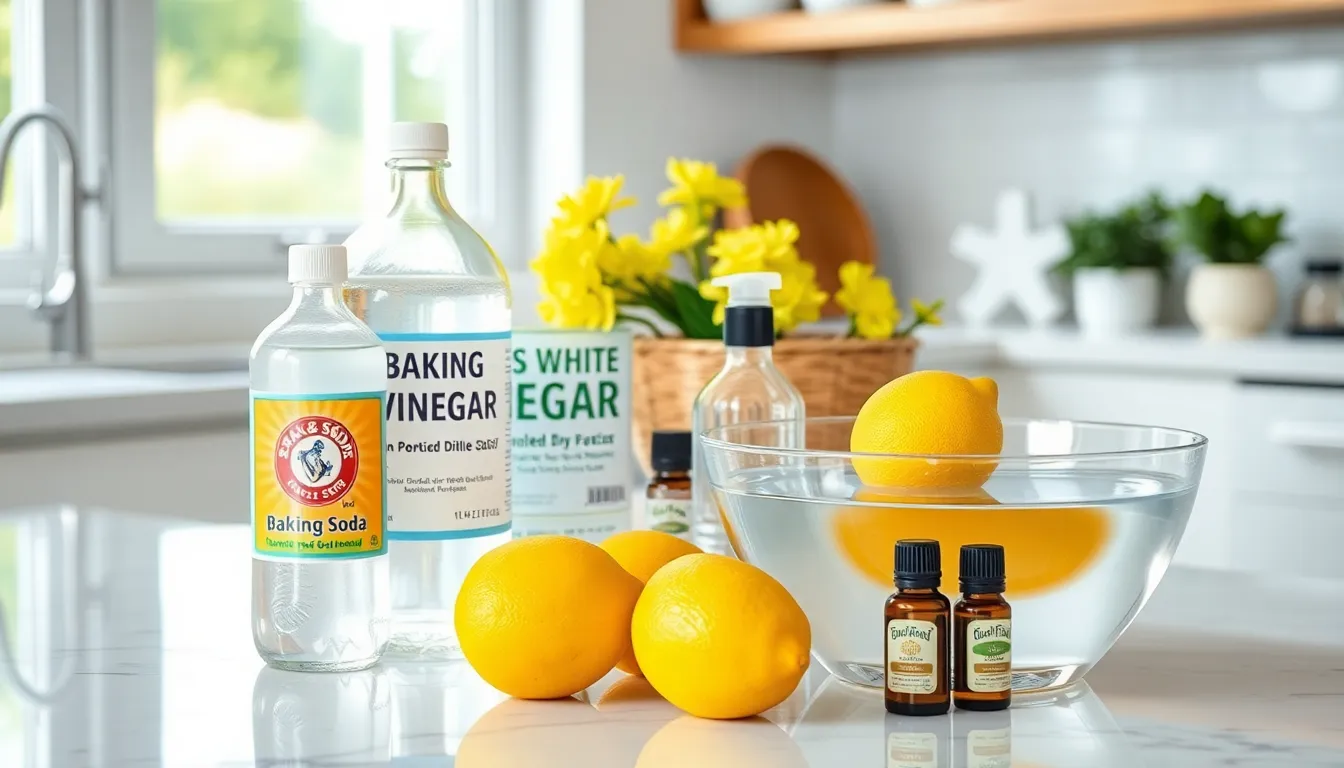Tiles can transform a space from drab to fab, but what happens when they’re covered in stubborn neomanclotise? Fear not! With a little know-how and a dash of creativity, anyone can whip up a homemade remover that’ll have those pesky stains begging for mercy.
How To Make Neomanclotise Remover for Tiles
Neomanclotise poses a significant challenge for tile maintenance due to its stubborn nature. Knowing the characteristics of neomanclotise allows for more effective stain removal strategies.
What Is Neomanclotise?
Neomanclotise is a type of residue that often appears on tiles, creating unsightly stains. This sticky substance results from a combination of dirt, grease, and moisture, leading to discoloration. It commonly affects ceramic, porcelain, and natural stone tiles, making them look worn. Factors such as humidity and inadequate cleaning contribute to its formation. Understanding its composition aids in selecting appropriate cleaning solutions.
Common Uses in Tile Maintenance
Neomanclotise removers serve various essential functions in tile maintenance. These products help restore the original appearance of tiles by eliminating deep-set stains. They also prevent the buildup of dirt and grime, extending the longevity of the tiled surface. Regular use of these removers keeps spaces looking clean and fresh, which enhances overall aesthetic appeal. Homeowners often utilize these removers in kitchens and bathrooms, where tile exposure to moisture and food residue is prevalent.
Ingredients Needed

Creating an effective neomanclotise remover requires specific ingredients. Gathering the right components ensures a successful cleaning solution.
Essential Components
Baking Soda serves as a primary ingredient due to its abrasive properties, effectively lifting stains from tiles. White Vinegar acts as a natural acid, breaking down residue and providing a deodorizing effect. Liquid Dish Soap helps to cut through grease, adding a surfactant ability for better grime removal. Water acts as a diluent, making the mixture easier to apply on surfaces.
Optional Additives
Essential Oils can enhance the solution’s fragrance, promoting a pleasant cleaning experience. Borax increases cleaning power, targeting stubborn stains with strong effectiveness. Hydrogen Peroxide offers additional disinfecting properties, making it suitable for spaces requiring sanitation. Lemon Juice not only adds a fresh scent but also possesses natural bleaching qualities that help brighten tiles.
Step-by-Step Guide
Creating a neomanclotise remover involves simple steps. Follow these detailed instructions for the best results.
Preparing the Mixture
Combine one cup of baking soda and a half cup of white vinegar in a mixing bowl. Combine gently to minimize foaming. Add a few drops of liquid dish soap for effective grease cutting. Optional ingredients like essential oils enhance fragrance; consider mint or lemon for a fresh scent. If using, incorporate a quarter cup of borax for additional cleaning strength. Adjust the texture by adding water until the mixture reaches a paste-like consistency. This blend effectively targets stubborn neomanclotise stains.
Applying the Remover to Tiles
Spread the neomanclotise remover across the stained tile surface. Use a soft cloth or sponge for even application, ensuring all stains get covered. Allow the mixture to sit for 10 to 15 minutes, giving the ingredients time to penetrate the grime. For persistent stains, use a soft-bristled brush to gently scrub the affected areas. Clean the tiles in a circular motion for maximum effectiveness. Rinse thoroughly with warm water to remove all traces of the mixture and any loosened debris.
Cleaning Up After Use
After rinsing the tiles, dispose of any leftover remover properly. Store unused portions in an airtight container, labeling it clearly for future use. Wipe down surfaces where the mixture was applied to remove any residue. Use a damp cloth to ensure all cleaning agents are eliminated. For optimal tile maintenance, consider mopping the area with clean water after cleaning. This step enhances shine while preventing dirt buildup. Regular cleaning ensures tiles maintain their appearance and longevity.
Tips for Effective Use
Using a homemade neomanclotise remover effectively requires careful attention to safety and application techniques. Following these tips can enhance cleaning outcomes.
Safety Precautions
Wear gloves to protect skin from irritation caused by vinegar and baking soda. While working in a well-ventilated area, open windows to minimize fumes. Avoid mixing the remover with commercial cleaners to prevent hazardous reactions. If sensitive to strong odors, consider using a mask. Additionally, keep the remover out of reach of children and pets to ensure safety during use.
Best Practices for Different Tile Types
Ceramic tiles respond well to the neomanclotise remover, allowing for gentle scrubbing without damage. For porcelain tiles, using a non-abrasive cloth helps avoid scratches. When dealing with natural stone tiles, always test a small, inconspicuous area first, since acidic ingredients can etch the surface. In addition, adjusting the amount of liquid dish soap may be beneficial for granite tiles, as it may require less to achieve effective results. These tailored approaches ensure optimal cleaning without compromising tile integrity.
A Practical Solution
Creating a homemade neomanclotise remover is a practical solution for maintaining the beauty of tiled surfaces. With simple ingredients like baking soda and white vinegar, anyone can tackle stubborn stains effectively. Regular use of this remover not only revitalizes tiles but also prevents future buildup of dirt and grime.
By following the step-by-step guide and safety precautions, individuals can ensure their cleaning efforts are both safe and effective. Tailoring the approach based on tile type further enhances the cleaning process, preserving the integrity of each surface. Embracing this DIY method will keep spaces looking fresh and inviting for years to come.


